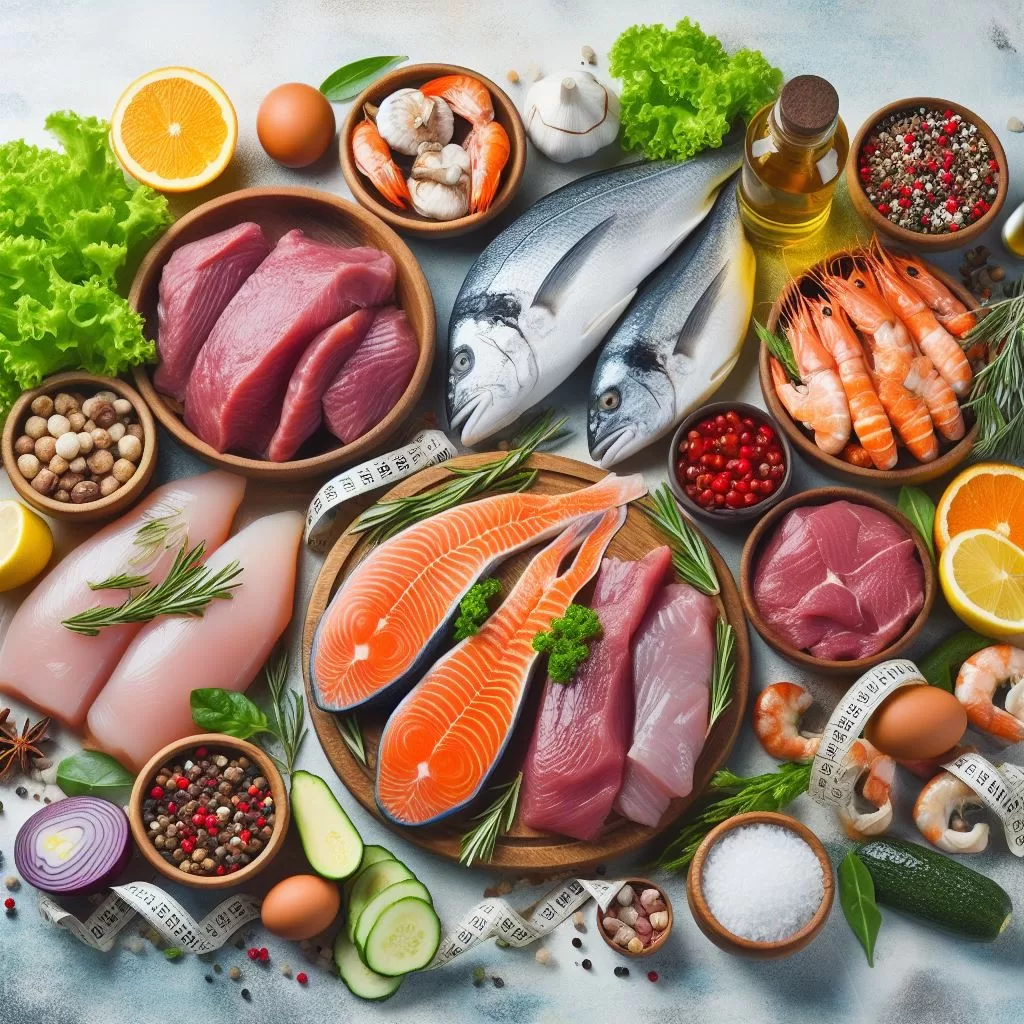When it comes to weight loss diets, low-calorie meat, poultry, and fish are often the undisputed protagonists. Not only are they delicious and versatile, but they also provide many benefits to the body. Here’s a detailed guide to these low-calorie protein sources, their nutritional value, and how they can help you lose weight.
I. Low-calorie meat, poultry and fish:
1. Chicken breast: an essential slimming ingredient:
Skinless chicken breast is the preferred option for those looking to lose weight. At around 165 calories per 100 grams, it’s packed with high-quality protein, which helps increase satiety and reduce overall calorie intake. Additionally, chicken breast is a good source of vitamin B6 and niacin, essential for energy metabolism.
2. Salmon: Rich in protein and omega-3:
Although slightly higher in calories, around 208 calories per 100 grams, salmon is an excellent source of protein and omega-3 fatty acids. These are known for their heart health benefits and may also play a role in weight regulation. Salmon is also rich in vitamins D and B12.
3. Turkey: A light alternative to chicken:
With around 135 calories per 100 grams, turkey is another excellent source of lean protein. It is particularly rich in tryptophan, an amino acid that plays a role in regulating appetite. Turkey is also a good source of B vitamins and selenium.
4. Cod: Low in calories, high in protein:
Cod, with only 105 calories per 100 grams, is one of the lowest-calorie fish. It is rich in protein and vitamin B12, as well as iodine, essential for the functioning of the thyroid, a key factor in metabolism.
5. Turbot:
With approximately 122 calories per 100 grams, this fish is rich in lean protein and vitamin B12, essential for energy metabolism and nerve health.
6. Shrimp:
Very low in calories, with only 99 calories per 100 grams, they are an excellent source of protein and selenium, a mineral that plays an important role in metabolic health.
7. Lean Beef Tenderloin:
Containing approximately 143 calories per 100 grams, it is a good source of protein, iron, and zinc, essential nutrients for maintaining muscle mass and general health.
8. Sole:
Sole is a very lean fish, with around 86 calories per 100 grams. This low-calorie content makes it a great choice for those looking to reduce their overall calorie intake without sacrificing satiety. It offers a good amount of high-quality protein, which is essential for maintaining muscle mass during the diet. Protein also has the benefit of providing a longer feeling of fullness, which can help reduce and control cravings.
II. Culinary advice for a slimming diet:
1. Grilling and roasting:
– Benefits: These methods allow food to be cooked without adding additional fat. They also preserve essential nutrients.
– Application: Use a grill or oven to prepare chicken, salmon or trout. Season with herbs and spices to add flavor without added calories.
2. Steam cooking:
– Advantages: Steam cooking preserves the nutrients and natural flavor of foods, avoiding the use of fats.
– Application: Ideal for fish fillets such as sole or cod. Add aromatic herbs to enhance the taste.
3. Cooking in Papillote:
– Benefits: This technique locks in flavors and moisture, cooking foods in their juices without requiring added fat.
– Application: Wrap fish or poultry with vegetables in baking paper or aluminum foil and bake in the oven.
4. Fry with a little water or broth:
– Advantages: Allows you to cook food quickly without using oil or butter.
– Application: Use this method for chicken breasts or vegetables. Add a little broth for more flavor.
5. Healthy Marinades:
– Benefits: Marinades can infuse meat and fish with intense flavors without adding calories.
– Application: Use mixtures of vinegar, lemon juice, herbs, and spices to marinate proteins before cooking.
III. How their components contribute to weight loss:
1. Omega-3 fatty acids:
Found abundantly in trout, they help reduce inflammation in the body, which can promote weight loss and cardiovascular health.
2. Vitamins and minerals:
Vitamin B12 in turbot and minerals like selenium in shrimp support metabolism and thyroid function, essential for effective weight loss.
3. Iron and Zinc:
Lean beef tenderloin is an excellent source of these important minerals for energy, metabolism, and muscle repair.
4. Lean proteins:
Present in sole, trout, chicken breast, turbot, shrimp, and lean beef fillet. Protein is essential for satiety, reduces appetite, and helps maintain muscle mass during weight loss.
IV. Strategies to optimize your diet:
1. Meal planning:
Prepare your meals in advance to avoid impulsive and unhealthy food choices.
2. Portion Controlled:
Even low-calorie foods should be consumed in adequate amounts.
3. Balanced meals:
Accompany your proteins with green vegetables and whole grains for a balanced meal.
4. Avoid high-calorie sauces:
Choose light, low-calorie sauces so as not to counterbalance the benefits of low-fat foods.
Conclusion:
By integrating these low-calorie meats, poultry, and fish into your diet, you will not only be able to enjoy their flavors but also benefit from their nutritional benefits. These foods can play a key role in your weight loss journey by helping you stay full while consuming fewer calories. Adopt these eating habits for healthy, lasting weight loss.

